Robotic welding does not describe a future where a bunch of terminator-like robots are running around with welders and welding the human race out of existence. Robots are considered our friends and when it comes to welding are there to implement automation and effectiveness.
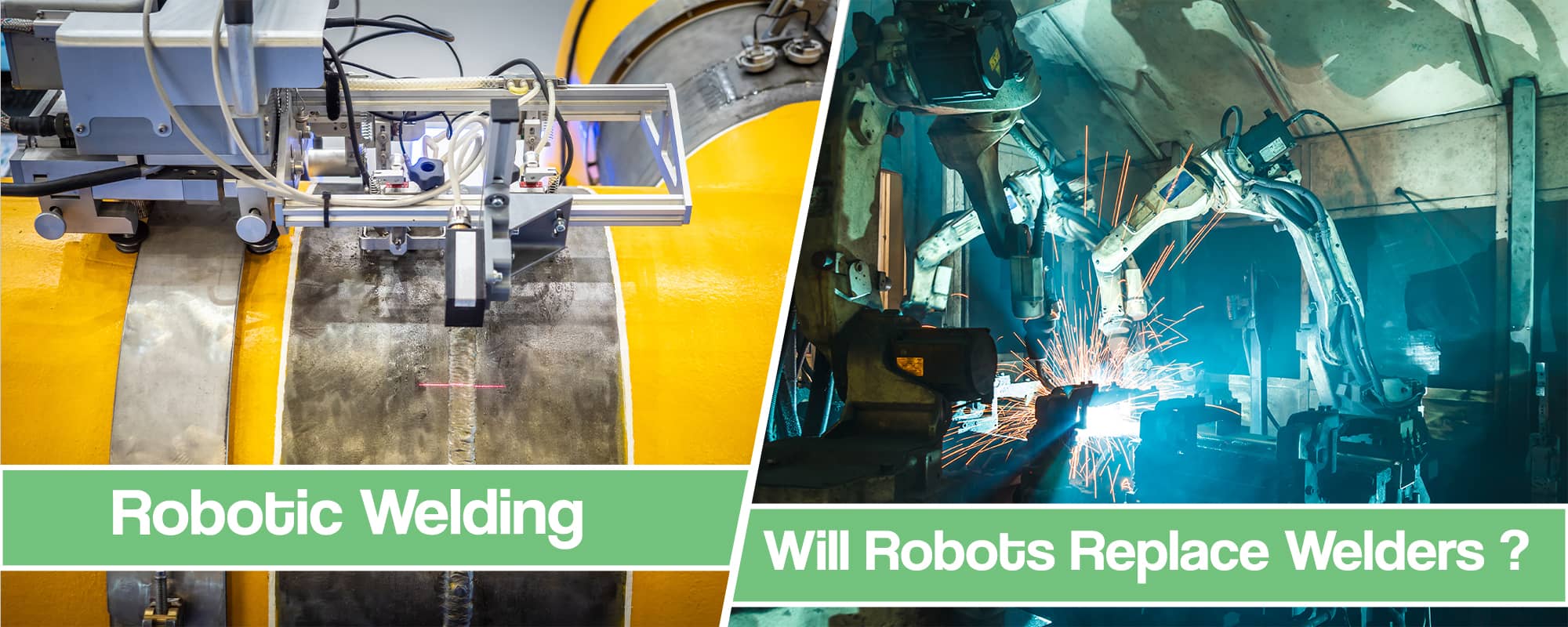
Robotic welding systems need to be regarded as systems and not a substitute for a human welder. They are not here to take our jobs, these systems are here to help. They are most productive when completing high-volume, repetitive tasks that would make a person go crazy after a while.
You may have your doubts when it comes to employing a robotic welding system. This article does not have to prove you wrong but it might help in clearing certain things up.
What is Robotic Welding?
Robotic welding is mainly used as a means of automating the welding process and increasing accuracy while reducing the time needed to finish the project. Doing things faster and with greater precision is the main reason why robotic welding systems are used instead of manual metal joining.
Several industries have already completely adopted robots to help with automated welding. Prime examples are the industrial sector and the automotive industry where things need to work fast and with a lot of precision.
Brief History of Robotic Welding
The origin of robotic welding can be traced back to 1962 when a robot created by George Devol and Joseph Engelberger, dubbed the Unimation 001, found its first real-life application. Its first job was to perform spot welding tasks on an assembly line in a General Motors company. However, it took some time for the robotic welding system to find its ground and only began receiving wide acclaim in the 80s when robotic welding processes were predominantly used by the automotive manufacturing industry.
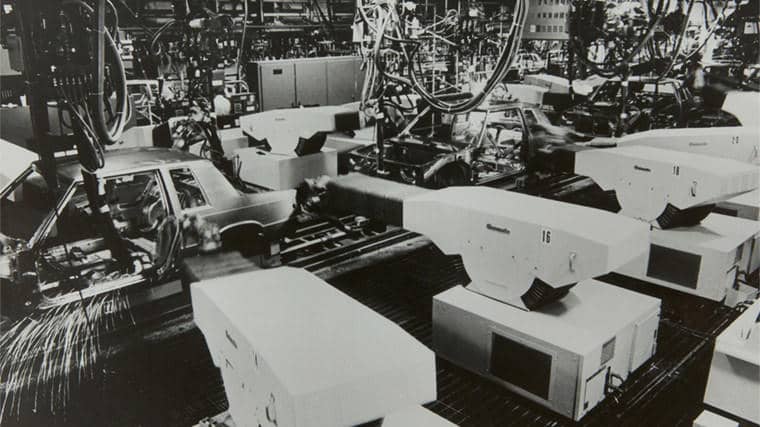
The success it had in the automotive industry was not unseen by others and it took little time for it to be employed elsewhere, like the metal manufacturing industry as its biggest supporter. So much usage brought to the evolution of robot welding so today we already see ones that have advanced motion control and 3D vision, making these machines more productive and functional.
How Robotic Welding Works?
Bringing in a welding robot requires changes that are supposed to accommodate automation. Welding robots use a variety of tools that are not a part of manual equipment. Tectilinear types of welding robots are able to move their arms in three dimensions while articulating can move in more planes.
A wire feeder will send the filler wire to the robot while a high-heat torch at the end of the arm melts the metal. The combination of the two is usually what robotic welding processes are comprised of. The temperature can get very high, so using a robot instead of a human increases safety.
Human workers are still needed, though. An operator is certified by the American Welding Society to oversee and inspect the entire process. They use a teach pendant to program the controller. The device will then set new programs, change the parameters of the process, and move the arm as needed.
It might look like playing a video game to an untrained eye, but believe us it is much more serious than that.
Robotic Welding Processes
Unfortunately, today’s welding industry is facing a shortage of experienced welders.
According to the American Welding Society, by the year 2022, we are going to be needing about 450,000 welders.
Becoming a welder requires a lot of education and skill, luckily robots can pick things up much faster and help replace the impending shortage.
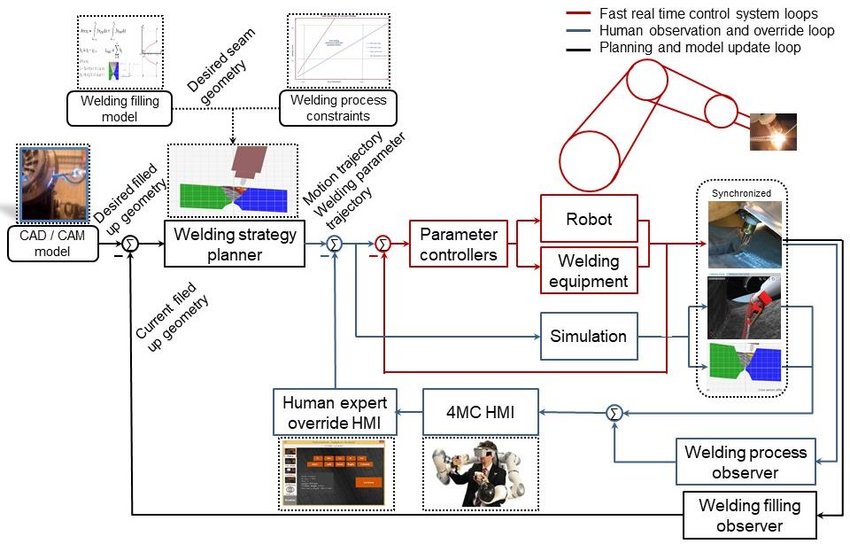
Some of the main welding processes that robots are capable of doing include:
- Resistance welding
- Arc welding
- TIG welding
- MIG welding
- Spot welding
- Laser welding
- Plasma welding
Of course, there are more robotic welding processes that machines are able to do, but the ones we mentioned are the most commonly used ones within the industrial sector.
Process Sensing
A robotic welding process is a complex combination of not only robotics and welding, but also combines sensor technology, artificial intelligence, and control systems. Robotic arc welding applications use a variety of sensors. Depending on the functions, sensors can be either process or geometrical.
Process sensors measure the parameters of the robotic welding process such as wire feed speed, current, voltage, and torch rotation. Geometrical sensors measure the joint geometry like gap size, deviations from the nominal path, weld size changes, and orientation changes. These sensors are also used for seam tracking, weld searching, and real-time adaptive welding.
Robotic or Manual Welding?
For certain types of welding needs, manual welding is still very much needed. In a situation where a welding process needs to be changed quickly and where one needs to adapt to the situation, a professional welder is still the best choice. Robots are not advanced enough to adapt so fast to the needs of a job.
For certain types of welding needs, manual welding is still very much needed.
In a situation where a welding process needs to be changed quickly and where one needs to adapt to the situation, a professional welder is still the best choice. Robots are not advanced enough to adapt so fast to the needs of a job.
However, most welding robot operators don’t only have to be certified by AWS. They need certificates in robotics, which the AWS also. Having a robotics expert that knows a thing or two about welding will enable him to accurately enter the programming needed and eventually improve accuracy, productivity, and speed.
Pros and Cons of Robotic Welding
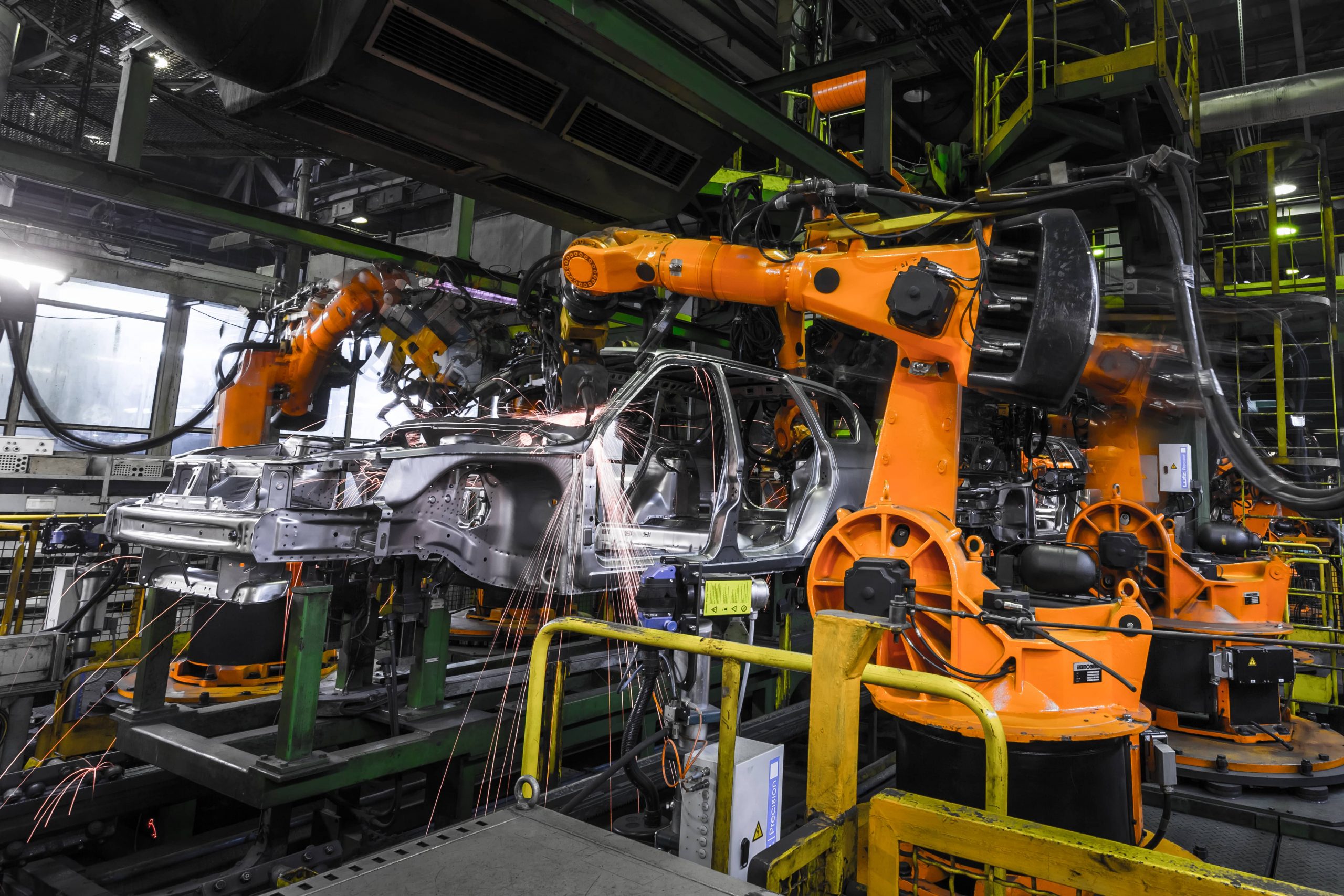
Pros
There are many positive sides that have convinced a lot of businesses to employ robotic welding applications for various purposes.
- Increased efficiency
- Accuracy
- Better safety
- Fewer costs
- Less waste
Cons
However, while helpful, there are still some downsides to robotic welding application.
- Lesser flexibility
- Higher upfront costs
- Not applicable for smaller projects
Pros and Cons of Manual Welding
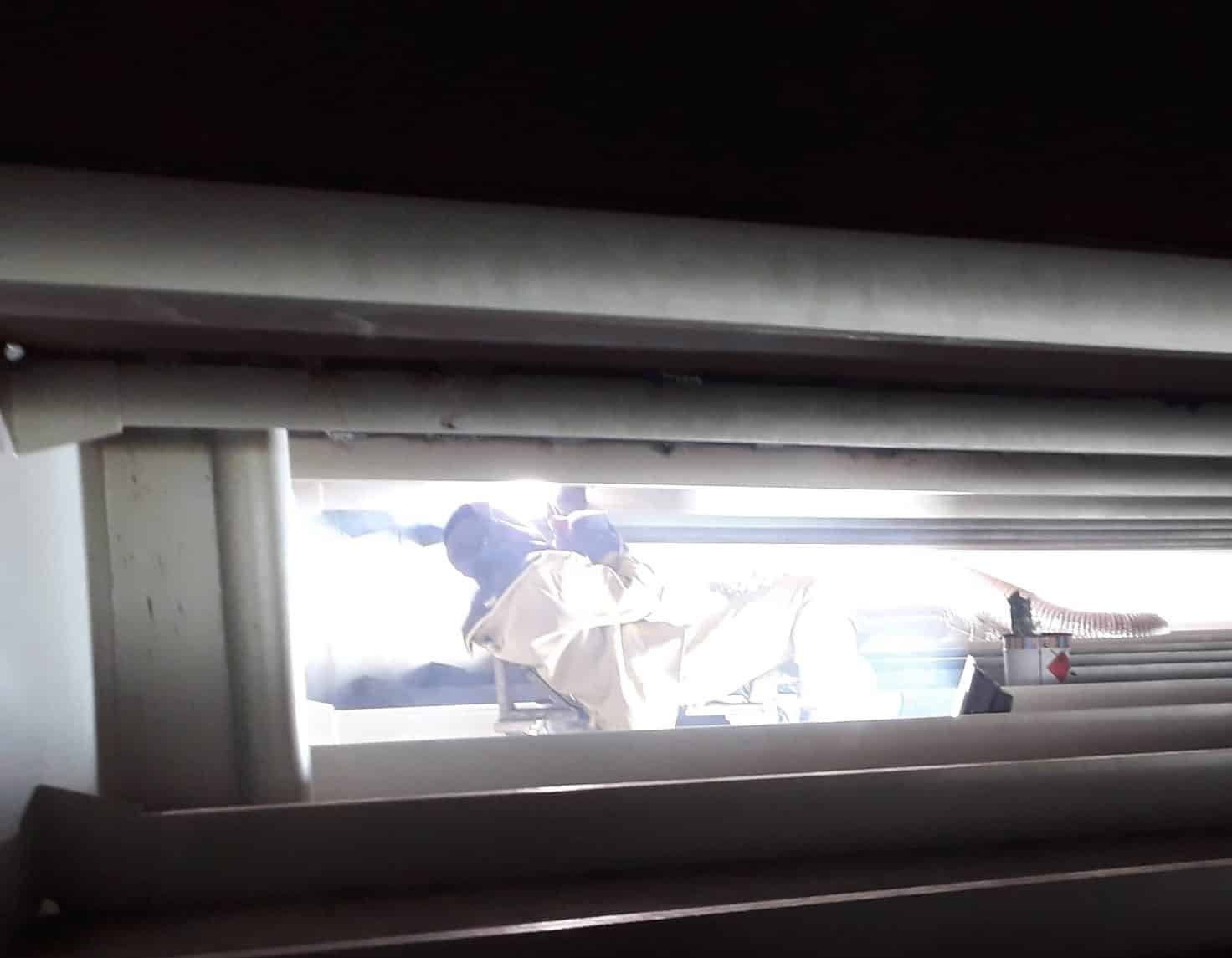
Pros
Manual welding is still held in high regard, no matter the increase in the application of robots in the industry. A human welder still has a lot of things to bring to the table.
- Flexibility – The ability to adapt.
- Interchangeable -Another worker can easily take place of an absent one.
- Awareness – People can spot possible machinery malfunctions
Cons
Ufortuatnley, there are still many disadvantages of human welders.
- Risk – Welding is a hazardous process and the injury rate is quite high.
- Less accurate – robots can perform with better accuracy.
- Reduced production – People work slower than machines and have a lower output.
If you wish to know more on manual welding and how to make money of it check this article
Key Issues
Even though introducing robot arc welding sounds like a very good idea, it comes with certain issues that you can’t turn your head away from. Automated robots can quickly fill the skill gap created but programming and using this type of equipment is complex for regular operations.
Sensor technology has come a long way and its availability, as well as reliability, has increased over the years. However, it is still not possible to efficiently and effectively apply them to certain applications. The temperatures, the spatter from molten metal, the light from the arc, and a dozen of other factors that come with arc welding are going to interfere with the sensors.
We are still way off from developing a system that can translate the data obtained by the sensors to fabrication.
Cost Justification
It seems that it has become justifiable to use robots in production as opposed to humans in terms of costs. Robot applications have started to offer good weld quality and performance at lower prices. On the other hand, labor and benefits laws have risen.
It takes a lot of training to create a skilled welder, and they still remain scarce in some parts of the world. Environmental safety factors also justify employing robots for industrial work. Failing to comply with OSHA and EPA standards can be expensive.
Training and Certification
The AWS Certification Program for Robotic Arc Welding – Operators and Technicians (CRAW) certifies the professionals needed for robotic operations. Certified technicians are equipped to work in accordance with certain standards, codes, and specifications. But, re-examination and proof of active practice are needed every three years. We have an article about traind welding technicians and their average yearly income. If you are interested you can check the article here.
Future of Robotic Welding
Currently, robotic welding accounts for only a portion of welding projects for various industrial work. But we are expecting the application of robotics to increase as innovations continue. Industrial innovations that are expected are ease of use and the ability to work with other machines.
Due to growth in the transportation and automotive markets, technological innovations will continue to improve productivity. Compound annual growth over a five-year period of 8.91% is expected by the year 2023.
Conclusion
The use of robotic arc welding is just going to expand further and further. You can’t deny the fact of it being able to produce a high volume of products with improved automation. Things can only get better and faster from here. But don’t worry, real live welders are still going to be needed as there is enough room for an old-school welder.



